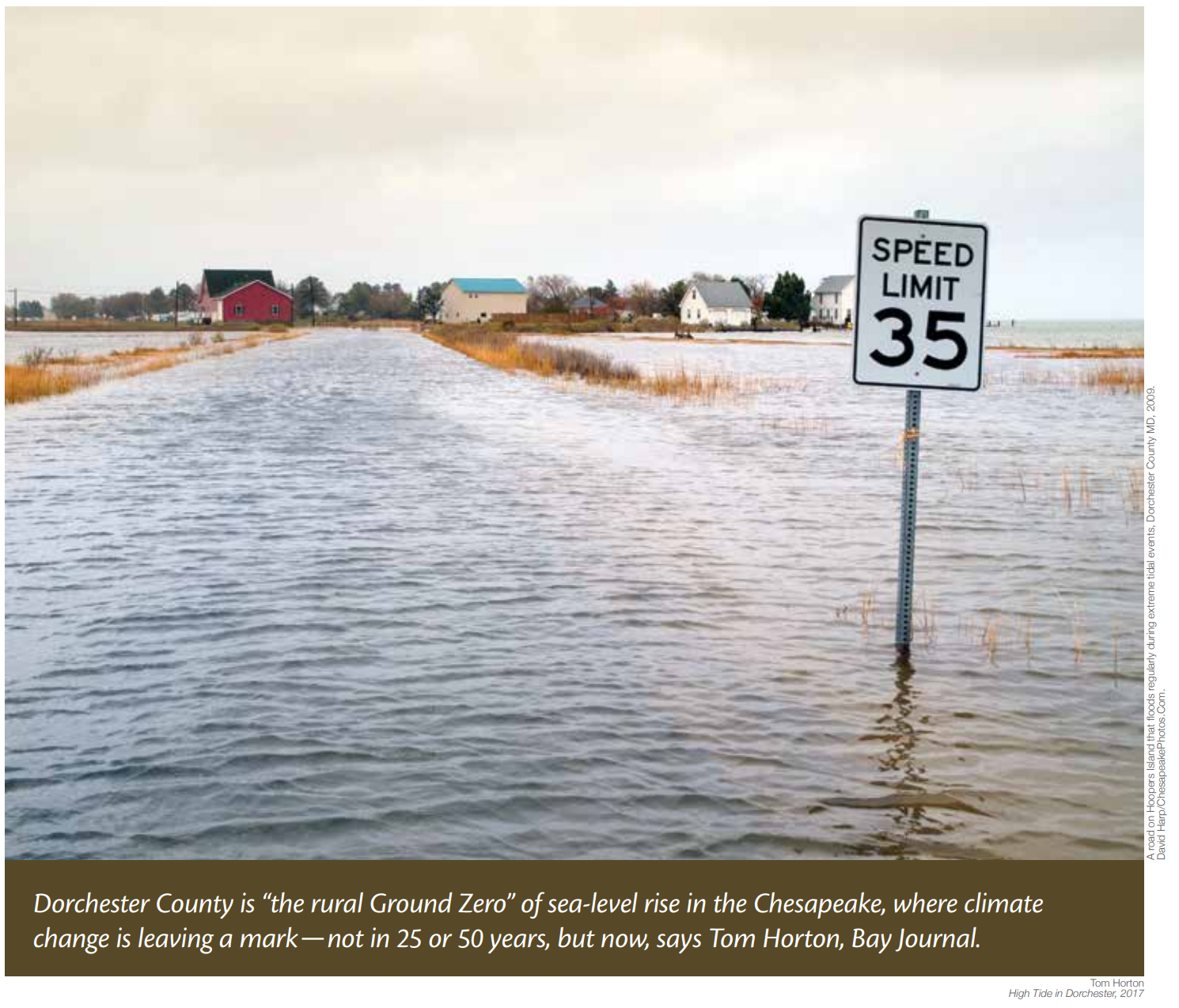In fulfillment of requirements of the Maryland Commission on Climate Change Act of 2015, this report provides updated projections of the amount of sea-level rise relative to Maryland coastal lands that is expected into the next century. These projections represent the consensus of an Expert Group drawn from the Mid-Atlantic region.
The framework for these projections is explicitly tied to the projections of global sea-level rise included in the Intergovernmental Panel on Climate Change Fifth Assessment (2014) and incorporates regional factors such as subsidence, distance from melting glaciers and polar ice sheets, and ocean currents. The probability distribution of estimates of relative sea-level rise from the baseline year of 2000 are provided over time and, after 2050, for three different greenhouse gas emissions pathways: Growing Emissions (RCP8.5), Stabilized Emissions (RCP4.5), and meeting the Paris Agreement (RCP2.6). This framework has been recently used in developing relative sea-level rise projections for California, Oregon, Washington, New Jersey, and Delaware as well as several metropolitan areas.
The Likely range (66% probability) of the relative rise of mean sea level expected in Maryland between 2000 and 2050 is 0.8 to 1.6 feet, with about a one-in-twenty chance it could exceed 2.0 feet and about a one-inone hundred chance it could exceed 2.3 feet. Later this century, rates of sea-level rise increasingly depend on the future pathway of global emissions of greenhouse gases during the next sixty years. If emissions continue to grow well into the second half of the 21st century, the Likely range of sea-level rise experienced in Maryland is 2.0 to 4.2 feet over this century, two to four times the sea-level rise experienced during the 20th century. Moreover, there is a one-in-twenty chance that it could exceed 5.2 feet. If, on the other hand, global society were able to bring net greenhouse gas emissions to zero in time to meet the goals of the Paris Climate Agreement and reduce emissions sufficient to limit the increase in global mean temperature to less than 2°Celsius over pre-industrial levels, the Likely range for 2100 is 1.2 to 3.0 feet, with a one-intwenty chance that it would exceed 3.7 feet.
The difference in sea-level rise between these contrasting scenarios would diverge even more during the next century, with the failure to reduce emissions in the near term resulting in much greater sea-level rise 100 years from now. Moreover, recent research suggests that, without imminent and substantial reductions in greenhouse gas emissions, the loss of polar ice sheets—and thus the rate of sea-level rise— may be more rapid than assumed in these projections, particularly under the Growing Emissions scenario.
These probabilistic sea-level rise projections can and should be used in planning and regulation, infrastructure siting and design, estimation of changes in tidal range and storm surge, developing inundation mapping tools, and adaptation strategies for high-tide flooding and saltwater intrusion.
